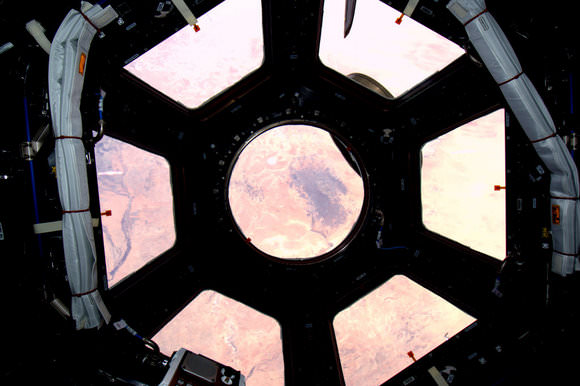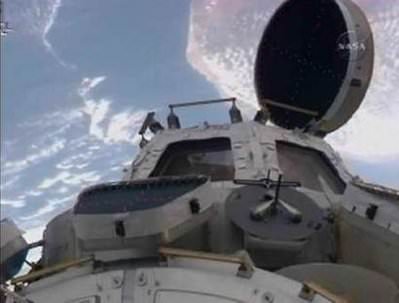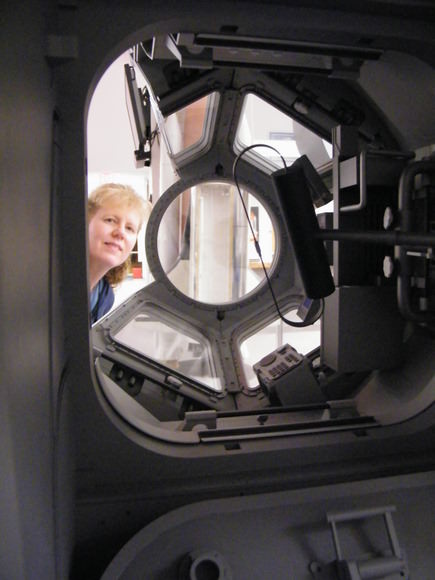[/caption]
Undoubtedly, this picture has what it takes to become an iconic image of human spaceflight, much like Apollo 8’s Earthrise or Bruce McCandless’ untethered spacewalk. Here, astronaut Tracy Caldwell Dyson looks down at Earth from the Cupola on the International Space Station, likely reflecting on both her home and her home in space. Everyone I know who has seen this image has just melted, with a sigh that says, “Oh, wow — that is just amazing!” (It made today’s Astronomy Picture of the Day.) My initial thoughts were that this is the one of the most poetic image of human spaceflight I have ever seen. And sure enough, Stuart Atkinson (the guy who I nominate at the Poet Laureate of Space) was inspired by this image, too. He has written a magnificent, heartfelt poem that captures the spirit –as well as the technology — of this image, and very likely sums up Caldwell Dyson’s thoughts as she gazes out the Cupola windows.
Read “Blue” by Stuart Atkinson:
BLUE
Ignoring the tsunami of technology humming behind her,
The chaos of cameras, computers and calculators
Covering the walls, she shuts her eyes and smiles.
This isn’t what she imagined as a girl.
In all those classroom daydreams she always saw herself
Looking down – or up – at the world from high above – or below –
Beside a plate-sized portal, straining to glimpse
Some small portion of the planet spinning silently beyond
The scratched and fingerprint-smeared glass, unable to see
More than mere hints of the colours, shadows and shapes
Shown in all the books and magazines…
But this…
Earth is there… everywhere…
A ball of burning blue close enough to touch.
Painted on the heavens in all its Van Gogh glory
It fills the sky, overflows her sight,
A startling Stargate of colour in an ocean of emptiness.
Even with her eyes closed she still sees its azure glow,
Feels its sapphire shades blazing in the ink-black night.
In the work-day-over darkness, Earthlight
Washes her face like cool rain as painfully beautiful
Whirls and whorls of milk-white cloud swirl
O’er the world below and she knows, in her aching
Heart, that long after she has returned to Terra,
To walk barefoot on its dew-drenched grass and
Splash in its ocean’s surging surf a part of her
Will always be here, at this window, gazing down
Upon the Earth.
© Stuart Atkinson 2010
Thanks to Stu for allowing us to publish his poem, a Universe Today exclusive! To see more of his poetry and imagery, check out his websites, Cumbrian Sky, and Road to Endeavour.




